Release date: 2016-01-22

Stanford Research Institute - a magical place
Born for war
In August 2015, on the occasion of the 11th anniversary of Google's IPO, Wall Street made an interesting statistic. It counted the US stock companies whose stock returns exceeded Google's (1277%) in 11 years since Google's listing. Of the 6,000 US stock companies, only 13 have a higher rate of return than Google , and one of them has an Intuitive Surgical return rate that far exceeds Google!
The Da Vinci robot technology originated from the Stanford Research Institute (SRI) with an official background. At the end of the 1980s, a group of scientists began research and development of surgical robots at the Stanford Research Institute. The original intention was to develop a suitable surgery for the field. Robot .
In a follow-up study, surgical robots attracted the attention of the US Department of Defense, who were interested in the system in which the surgeon could operate remotely to perform surgery on soldiers. Soon, this interest became a practical action. In 1990, the project team received an investment from the National Institutes of Health, hoping that they could develop prototypes for practical use as soon as possible.
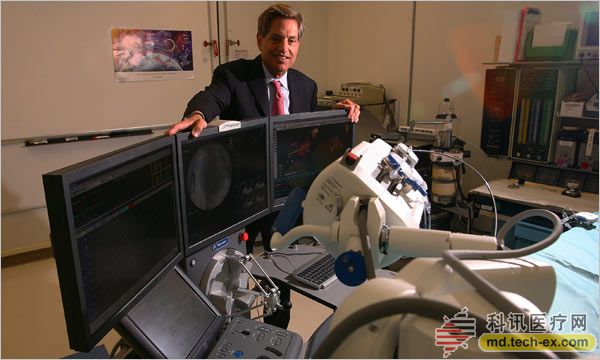
Going to commercialization
In 1994, Dr. Frederic Moll was very interested in the system, when he worked under SRI director Guidant, and he repeatedly requested to commercialize "Lenny" (early Da Vinci robot) to maximize its value, however No one saw this at the time, everyone was busy how to make it a bit cooler.
So Frederic Moll called John Freund, who had just resigned from Acoson, and SRI successfully purchased the intellectual property rights of Lenny Robot after several negotiations. Then in 1995, Intuitive Surgical Devices Inc was established, which introduced venture capital from the start, including the Field Fund, Sierra Leone Capital and Morgan Stanley.
Later, several co-founders of the company, Moll and Freund, have left the company. The current Guthart joined in 1996. He previously worked at the Stanford Research Institute (SRI). Most of the remaining executives were added later. At present, executives hold more shares in the board of directors Lonnie Smith and CEO Guthart, holding 1.15% and 0.93% respectively.

Four generations of robots
The surgical robot " Da Vinci " is named after the earliest robot prototype drawn on the drawings by the painter Da Vinci 500 years ago. Later generations used this as a prototype to design a robot for medical surgery, named after "Da Vinci."
In fact, the more formal name of the Da Vinci surgical robot should be " endoscopic surgical instrument control system ." It is an advanced surgical robotic system developed by Intuitive Surgical. It is widely used in abdominal surgery, urology, obstetrics and gynecology and cardiac surgery in adults and children. The design philosophy is to implement complex surgical procedures by using minimally invasive methods.
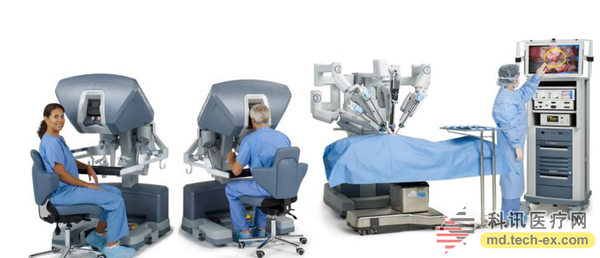
Four generations of products have been launched:
- Launched the first generation of Da Vinci robots in 1996
- Launched the second generation in 2006, the range of robotic arm movements is larger, allowing doctors to perform multi-view observations without leaving the console
- In 2009, on the second generation, the dual-console, analog controller, intraoperative fluorescence development technology and other functions were added, and the third generation product was introduced.
- The fourth-generation robot was launched in 2014, and its flexibility, precision, and image clarity have been improved. The company also developed a remote observation and guidance system in the second half of 2014.
At this time, I inserted the " Da Vinci Robots " of the Little Doctor Comics Series. The second brother came. He wants to be a guest. Well, just meet him.
More warning ahead, the second brother is a medical consultant !!!
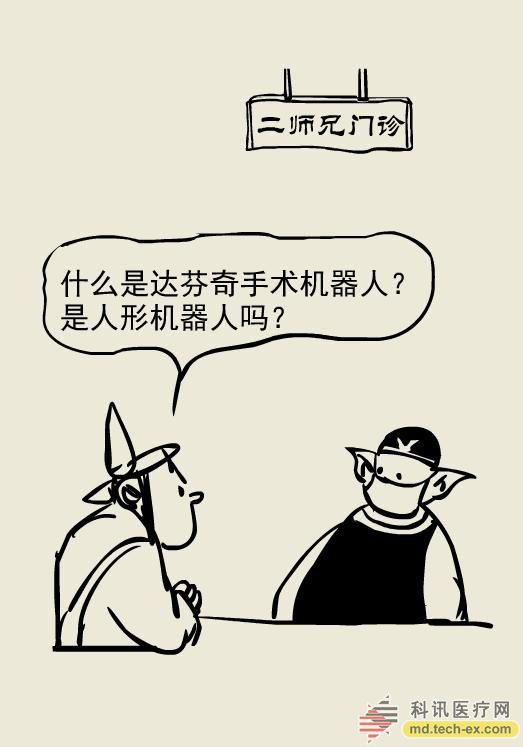
The second brother said that this is not the case~ For surgical robots, many people mistakenly think that the robot is doing surgery. In fact, the surgery is still done by the doctor, and the robot is just an auxiliary device .
Then he continued to talk to himself~~
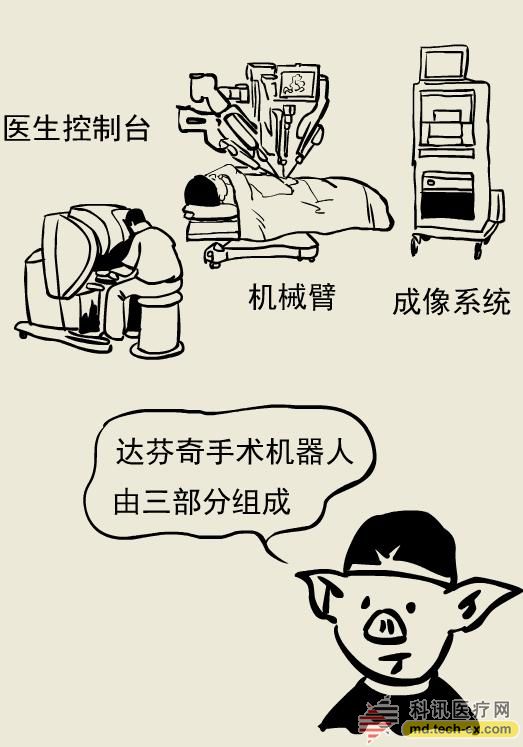
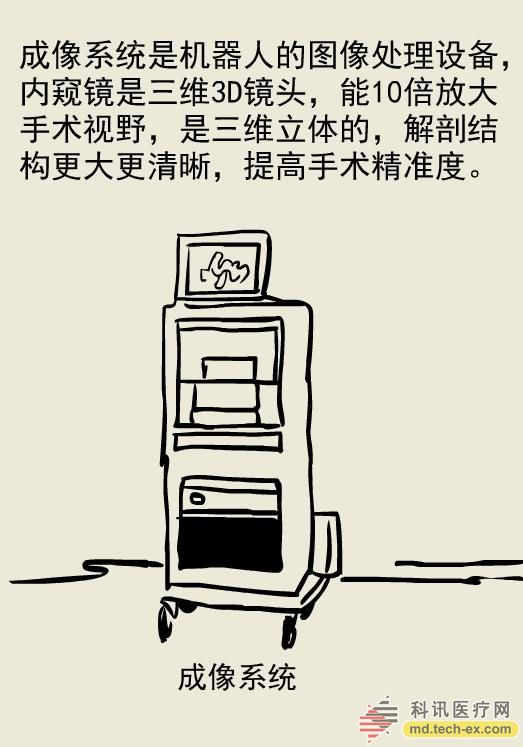
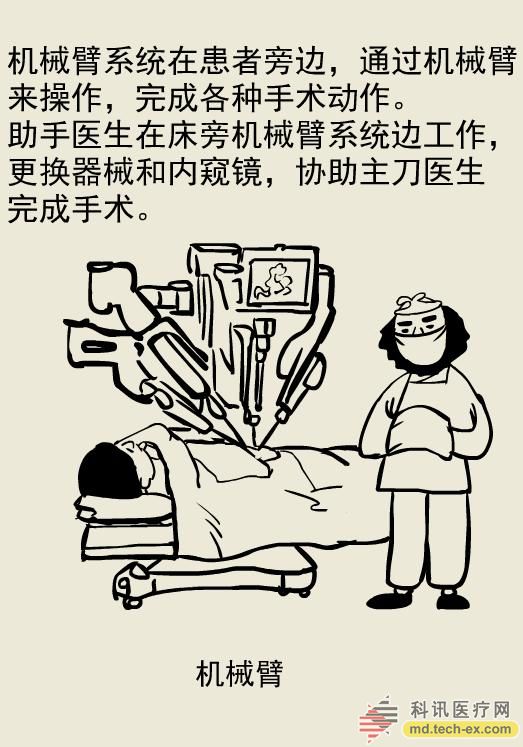
During the operation, the doctor sits in front of the console, puts the finger into the corresponding " finger sleeve ", and manipulates the tip of the robot arm " remotely " through the control handle.
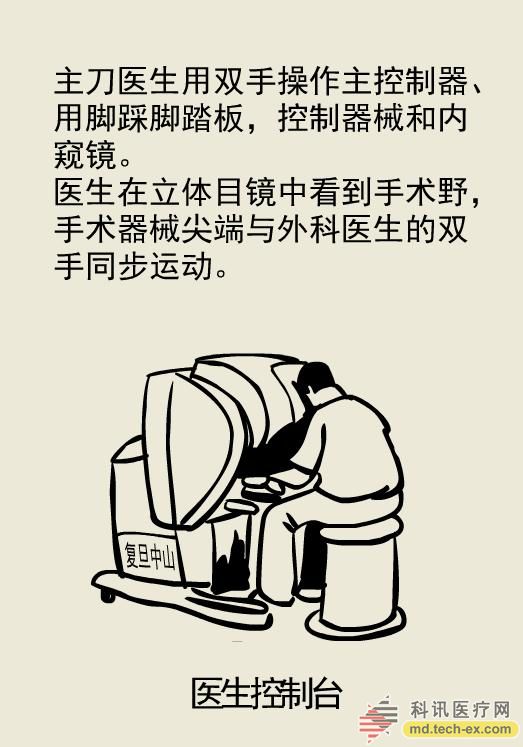
Ok, nothing happened, we continue~~
The Da Vinci surgical robot can mimic the surgeon's hand movements and enter the patient's body for surgery through console instructions. The company hopes to achieve Minimally invasively surgery through robots, minimizing the pain caused by surgical trauma in surgical patients, and reducing the corresponding recovery time and hospitalization costs.
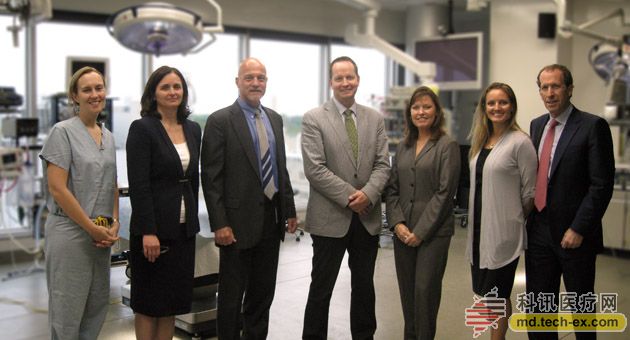
"Microsoft" in the surgical field
I have always believed that in the business field, if you want to create a company, if you are an entrepreneur, entrepreneur, you definitely want to monopolize the market and avoid competition, so only the losers compete with each other.
By paypal founder Peter Thiel
The monopoly position of the Da Vinci surgical robot in the surgical field allows it to maintain a gross profit margin of 70% throughout the year. The reason is, on the one hand, because of the high threshold of the medical robot industry, and the troublesome FDA approval. In fact, the main reason is that intellectual property protection of intuition surgery companies has created large technical barriers.
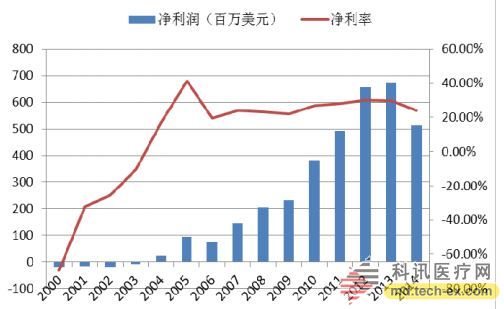
The general development of surgical robots requires strong capital and cutting-edge technology to prepare. The whole research and development involves many disciplines such as medicine, biomechanics, mechanical mechanics, materials science, computer graphics, computer vision, artificial intelligence , mathematical analysis, and robotics. To enter the market, you must have decades of technical accumulation and continuous research and development investment.
ISGR's R&D investment is directly proportional to revenue, and R&D generally accounts for around 8% of revenue, and there is ample talent pool.
As for the FDA (US Food and Drug Administration) certification, the development of any medical device in the United States requires rigorous monitoring and evaluation by the FDA , not to mention the large equipment of surgical robots. From a laboratory to a successful application, a surgical robot requires not only a lot of money, but also takes time to test. It is impossible to take small animals for surgery. Therefore, it is necessary to require the robot to maintain high precision without error. In general, Safety and effectiveness are the most important.
There are several types of FDA monitoring systems, in which surgical robots need to pass PMA and 510k requirements. Everyone knows that FDA testing often takes several years, which further increases industry barriers. It seems that at least in the next few years There are decent competitive products.

Ultra high replacement cost
Due to the particularity of the product and the object of use, the surgical robot requires specific training and follow-up services and accessories, hospitals that have purchased their machines, and if they want to change the robots later (of course, only Da Vinci is available), they will face very High replacement costs, just like the bank's IT system. Therefore, once the intuition surgery company locks the user to achieve sales, the customer will not give up using it without any major quality and technical problems.
In addition, Da Vinci is required to apply for a job. It takes a while to learn the machine (the only training base in Greater China is located at the Prince of Wales Hospital in Hong Kong). Once you get used to an operation, it is difficult to adapt to other The machine's, thus potentially setting technical barriers.

King of gold
In August 2015, on the occasion of the 11th anniversary of Google's IPO, Wall Street made an interesting statistic. It counted the US stock companies whose stock returns exceeded Google's (1277%) in 11 years since Google's listing. Of the 6,000 US stock companies, only 13 have a higher rate of return than Google , and one of them has an Intuitive Surgical return rate that far exceeds Google!
The growth of an intuitive surgical company can be roughly divided into three phases:
- In the early years of growth from 2000 to 2003, it was in a state of loss.
- In the middle of the growth period from 2004 to 2009, sales increased rapidly during this period, profitability improved rapidly, and the market value was the highest.
- After the relatively mature period after 2009, the revenue and profit of the period will still maintain steady growth, but the growth rate will drop significantly, and the market value will return to normal, tending to the market average.
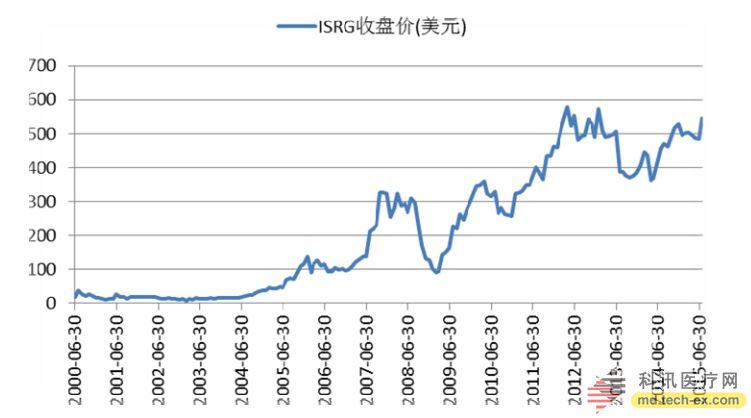
As the leader in medical robotics, the Intuition Surgery Company (ISRG) has a market capitalization of $22 billion. The company was listed in June 2000. In the past few years, due to the technology's forward-looking and low market awareness, the stock price performance was flat. At this time, the company's PS (marketing ratio) was 12 times. In 2001-2004, PS was maintained at less than 10 times.
In 2004, ISGR finally turned a profit. At this time, due to weak profitability, PE reached 58 times, and the valuation was significantly higher than the average 25 times PE level of the US medical device companies at the same time, indicating that the market has Higher confidence.
In 2005, the company entered a turning point. The Da Vinci robot developed by the US FDA 510k was approved for gynecological minimally invasive surgery, which greatly expanded the application of the Da Vinci surgical robot. The year's operating income increased by 60% year-on-year, net profit increased from $23 million in the previous year to $94 million, and the stock price tripled, surpassing $100 for the first time, and the total market value increased from $1.3 billion to $4 billion. The corresponding PS ratio has reached 18 times and the PE has remained at 45 times.
In 2006, although revenue still maintained a high growth rate of 64%, due to low profit margins and depreciation of new products, the stock price remained stable, while PE was basically the same as in 2005. It can be seen that after entering the middle of growth, profitability has gradually become the core ability of enterprises to obtain high valuation.
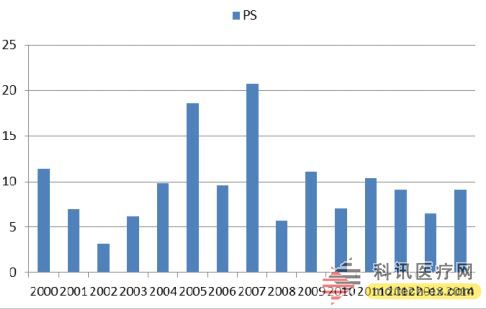
In 2007, the stock price of Intuition Surgery Company once rose to 300 US dollars, the total market value exceeded 10 billion US dollars, and the PS ratio exceeded 20 times.
During the 2008 financial crisis, Da Vinci robot sales continued to grow at a high rate. However, due to the overall valuation of the market, PE dropped from 86 times in 2007 to 24 times in 2008, and ps dropped to about 7 times.
After 2010, the growth rate of revenues in the relatively mature period tends to be flat, and the profitability remains relatively stable. PE remains at 25-35 times, which is still higher than the average PE of ordinary medical device companies. In the EV/EBITDA index commonly used by robot companies, the EV/EBITDA of intuition surgery companies is basically consistent with the PE trend.
In 2012, due to the outstanding performance and huge sales of the newly developed third-generation surgical robot, the stock reached a peak of 594 US dollars, which was 30 times higher than the initial market!
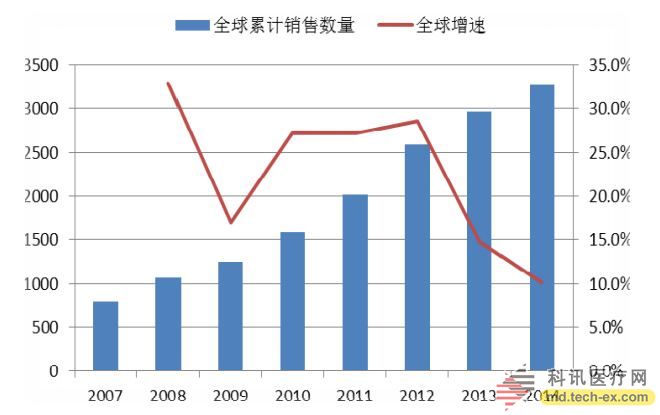
Since its launch in 2000 and in 2012, thanks to the high price and penetration rate of Da Vinci robots, the operating income of Intuition Surgery has maintained rapid growth, with a compound annual growth rate of 45% and operating income in 2004. For the first time, it broke through 100 million US dollars. In 2009, it broke through the $1 billion mark. The sustained high-speed growth has enabled Da Vinci robots to quickly cover major hospitals in the United States.
At the same time, due to the durability of the equipment in the US market and the slow development of the overseas market, the problem of weak growth began to appear. In 2014, the operating income was 2.13 billion US dollars, the first year-on-year decline.
The scarcity of Da Vinci surgical robots in the medical surgical field has also enabled the company to achieve ultra-high gross profit margins and net profit margins. As a equipment supplier, since 2005, the gross profit margin of intuition surgery can be maintained at 70% for many years. Left and right, the net interest rate has been higher than 20%, and the gross profit margin and net interest rate are significantly higher than the industry average.
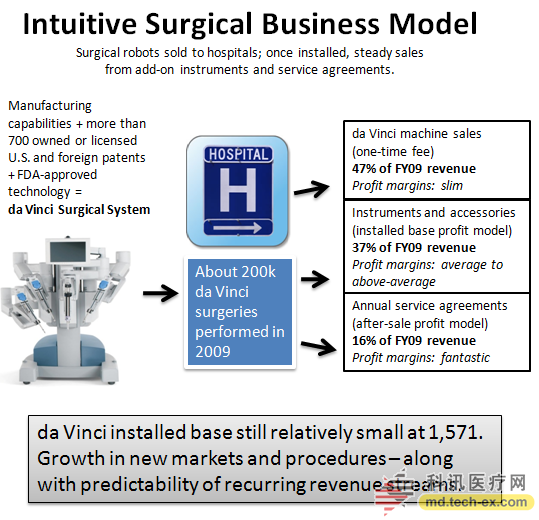
After-sales sales are more powerful
Intuitive Surgery's profit model is based on the sale of Da Vinci robots , while exclusively selling long-term, stable, repetitive consumables, accessories, and services.
In terms of sales model, intuition surgery companies mainly use direct sales and agent models. In the United States, domestic companies use direct sales models. In the development of international markets, the company model will help to rapidly open up the market. The agent model, but with the increasing market acceptance, is gradually shifting to the direct sales model.
Since Da Vinci robots have covered more than two-thirds of the large and medium-sized hospitals in the United States, even some community hospitals have been equipped with Da Vinci robots, and it is unlikely that their rapid growth in the United States will be possible. Structural changes, we can also see that the Da Vinci robot's profit growth model is gradually changing.

Each Da Vinci robot sells for about $1 million to $2.3 million. Since 2009, the revenue from accessories and services has exceeded the system sales revenue, and this trend will continue in the future.
In 2012, the proportion of recurring income such as tool accessories services was only 57%, and by 2014 this ratio had increased to 70%. Recurring income refers to the income of consumables such as tools and accessories, as well as service income such as maintenance and training.
Since the equipment safety of the Da Vinci robot is directly related to people's safety and health, the Intuitive Surgery Company has imposed strict restrictions on the use of mechanical arm scalpels, such as memory chips, which are mounted on the robot once, each time. It will count +1, 10 times after the robot can not use this device, one of the purposes is that the intuitive company makes more money, because this is a consumable must be bought from their company, the second purpose is to avoid structural failure inside the device, resulting in surgical risks.
After 10 operations, the robot will automatically lock and the new robot arm must be replaced before it can be restarted. This regulation makes the Da Vinci surgical robot's booting fee very high (average 4-6 million), which increases the patient. The cost of use, but for intuitive surgery companies, is a good way to ensure stable operating income.
According to statistics, for each operation, the consumables that need to be consumed are worth 700-3200 US dollars. According to the calculation of 200 operations per robot per year, the income of tool accessories for each robot can reach 140,000-640,000 US dollars. The annual agreement service of the robot is 100,000-170,000 US dollars. In this way, the recurring income of each Da Vinci robot can reach 240,000-81 million US dollars, measured by the average value of 500,000 US dollars. The existing Da Vinci robot can generate recurring income of 3,200 * 500,000 US dollars per year = 1.6 billion US dollars, which is close to the actual data in 2014.

Waiting for the wind
The biggest advantage of the surgical robot relative to the human hand is its accuracy and minimal invasiveness, so there are great advantages when dealing with some complicated operations (such as a large number of nerve endings in the operating area). With medical technology, surgical instruments With continuous improvement, the adverse reaction rate after surgery is gradually declining. If the surgical robot can be widely used and minimally invasive surgery is performed, the adverse reaction rate will be greatly reduced.
At present, the most important application fields of medical surgical robots are in urology and gynecological surgery . Gynecological surgery has replaced urology surgery since 2009 as the largest type of surgery, followed by urology surgery, the third in general surgery, but the fastest growth. In the United States, the penetration rate of prostate surgery and hysterectomy is more than 70%, while in Europe and other developed countries, the penetration rate is significantly lower.
The Da Vinci robot's previous surgery focused on a number of cancers and complex precision surgery. Since the first surgical robotic radical prostatectomy in 2000, more than half of the prostate surgery in the Nordic countries has been performed by surgical robots. In the United States, this proportion is as high as 83%, and the use of Da Vinci robots for prostate surgery has become a "standard technique." In some first-class hospitals in the United States, the proportion of robotic minimally invasive surgery has exceeded 50% of the total surgical operation in the hospital. Many patients who receive Da Vinci surgery can be discharged 24 hours after surgery because the wound is small, the damage is small, and recovery It is very fast. At present, in emerging markets such as China, due to the limited number of installed machines, the penetration rate of surgery is still very low. The advantage of Da Vinci robots relative to the human hand is obvious, so there will be a large market demand space in the future.
As of 2014, Intuition Surgery has sold 3,266 Da Vinci surgical robot systems, including 2,223 in the US, 549 in Europe, 191 in Japan, and 301 in other regions. Since the cumulative sales volume has exceeded 1,000 units in 2008, it has maintained rapid growth for several consecutive years. However, since 2013, the growth rate has slowed down. In 2013, the global installed capacity of Da Vinci robots reached 2,966 units, and in 2014, it reached 3,266 units, with a growth rate of 10.1. %.
As can be seen from the regional distribution, the main market for Da Vinci robots is still in the United States, and the promotion rate in other parts of the world is slow, a big reason is its high price. As the installed capacity continues to increase, the number of operations performed by Da Vinci robots has also increased rapidly. In 2014, there were 570,000 operations using Da Vinci robots, an increase of 9% year-on-year, and the growth rate has dropped from the previous years. On average, each robot performs 180 operations per year, which is used nearly twice a day.
The Da Vinci surgical system has been approved by the FDA for laparoscopic, gynecological, thoracic, urological, and cardiac surgery. The main target markets are gynecology, urology, urology, and cardiac surgery.
At present, gynecological surgery is performed using the highest frequency of Da Vinci. In 2014, Da Vinci robots completed 235,000 gynaecological operations in the United States (240,000 in 2013 and 222,000 in 2012). General Surgery is the second largest and fastest growing type of surgery, with 1.107 million cases of general surgery completed in 2014. With the further enhancement of the fourth-generation product technology, the application range of Da Vinci surgical robots will be more extensive, and its sales will also be greatly promoted.

Ten beautiful and nine beautiful, still lacking a beauty
Of course, in addition to the core competitiveness of technology and user stickiness, intuition surgery companies have faced a series of problems in recent years. Mainly from legal disputes in medical accidents and new medical insurance policies in the United States.
In 2014, there were 93 legal disputes in the Intuition Surgery Company, which basically came from surgical medical accidents. The company paid $77 million to settle these lawsuits. Obama’s health care reform bill also has a certain impact on the company’s product sales: Obama’s Affordable Care Act was officially passed in Congress in 2012. The core idea of ​​the bill is that everyone’s mandatory medical insurance. Let some hospitals face certain budget pressures, thus reducing the procurement of high-end equipment.
The high cost of surgery for Da Vinci robots is also a major obstacle to its large-scale promotion.
The robot arm is a high-value consumable. It is temporarily installed on the robot during use. Each arm has a limit on the number of uses, and it cannot be used after 10 times. The price of the robot arm is about 100,000 soft sister coins per game. Each operation requires an average of at least 4 arms, so the starting cost of 40,000 to 60,000 is probably from this. When the machine is always on, there is a loss in itself. If it is broken, the maintenance cost is far better than the robot arm. In actual use, each operation is turned off after the end of surgery.
The robotic arm is the core component here. It looks like a laparoscopic instrument. It has universal arms, grippers, scissors and other different arms. The positions are interchangeable. Unlike laparoscopic instruments, each arm has a number of small joints that can perform a variety of complex tasks that are sometimes impossible to perform with human hands.

China, China, China
The market for Da Vinci surgical robots is still dominated by the US domestic market, with revenue accounting for more than 70%.
In the United States, Da Vinci robots have become very popular. In more than 5,000 hospitals including community hospitals, the installed capacity of Da Vinci robots has reached more than 2,200. As long as it is a large-scale hospital, it will definitely be equipped. Finch robot.
In addition to the US domestic market, another large market is the European market, and it is also Da Vinci's first market. Before the FDA's 510k certification, Da Vinci robots obtained the CE certification of the European Union, thus opening up In the European market, the European market has great potential for development relative to the US market.
In China, it is totally different.
The only agent of Da Vinci Robots in China is the US-China Mutual Company .
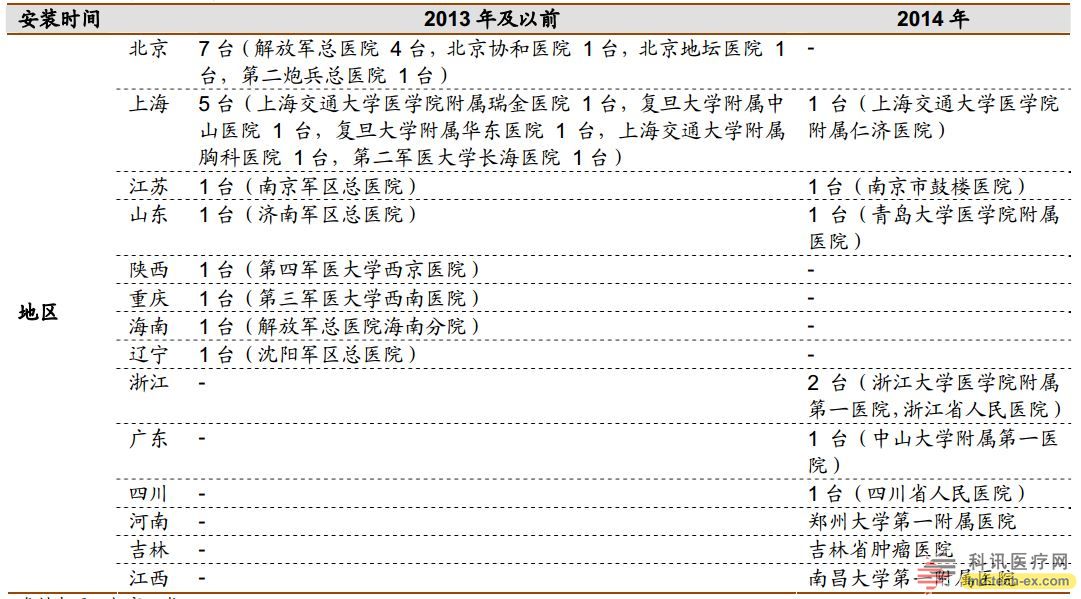
Since the introduction of the first Da Vinci surgical robot in the General Hospital of the People's Liberation Army in 2006, the Da Vinci robot has entered China for ten years. However, since the Da Vinci surgical robot belongs to Class A large-scale medical equipment, the introduction of this equipment by any hospital in China requires direct approval by the Health Planning Commission, so the introduction speed has been slow. Since the introduction of the first Da Vinci robot in 2006, China At present, the total installed capacity of the mainland is less than 40. The number of Da Vinci robots can also be seen from the side.
If the overseas market, especially China, and other emerging markets can continue to make breakthroughs, and the annual sales of Da Vinci robots will remain at around 500 units, the growth rate of intuition surgery companies can be maintained at around 20%.
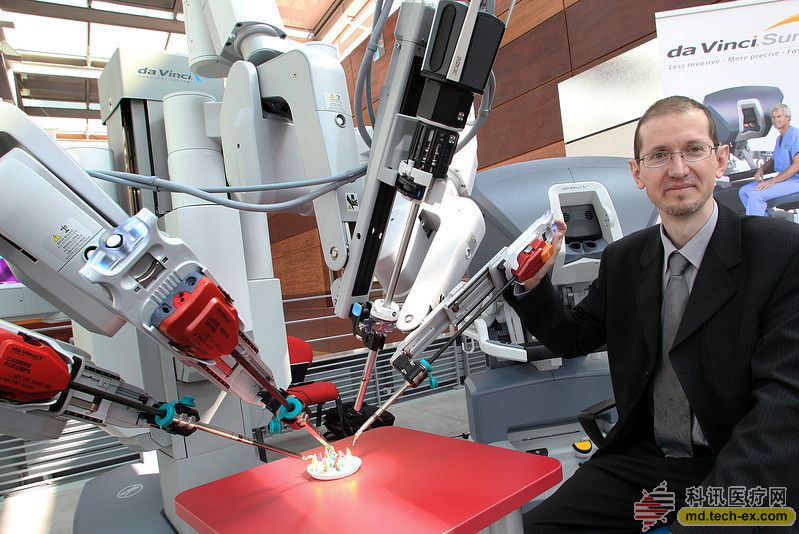
"Done alone seeks defeat"
Due to its leading technological advantages, Da Vinci robots currently have few competitors.
However, ISGR is not the first company to develop a surgical robot. The computer motion company that developed the AESOP robot in 1994 and the more advanced ZEUS robot in 1998 entered the market earlier than ISGR, but its products have not been approved by the FDA. . So I have not opened the market.
After the listing of intuition surgery in 2000, the two companies began a patent battle. In 2003, ISGR acquired the computer motion of the minimally invasive surgery robot pioneer. The technology of ZEUS was also transplanted to the Finch robot, and the intuition surgery company adopted the method of merger and acquisition. Eliminated the biggest competitor. At this point, the world's minimally invasive surgery robot Da Vinci family alone, has been rampant to eat meat for decades.
Of course, there are many companies around the world who have taken a fancy to this fat market, including Samsung, KUKA, a German company, a Korean company, Johnson & Johnson, Google and many other giants that have already invested in research, but they have already The status can't be too much pressure, just like Bloomberg , which is the terminal of financial transactions. Once the habit is developed, it will be difficult to change.
Domestically, it is said that the recent stocks of Bosch shares , which is a research team of Harbin Institute of Technology, have been continuously updated, which shows the madness of investors' concept of robots.
As the only medical robot company in A-share. At present, the company has completed the finalization of the prototype of the second-generation prototype, and will enter the type test. After applying for the clinical trial license, clinical trials will be carried out. If the progress is smooth, it will take 2~3 years to obtain the registration of medical device products, so there will be no performance contribution in the short term . However, if the product verification is mature (the direct competitor is the medical robot of Da Vinci in the United States), it will be able to provide a package of abdominal, thoracic and pelvic surgery in the future, covering more than ten surgical departments including general surgery, thoracic surgery, urology and gynecology. The surgical department has broad application prospects.
Source: Arterial Network
We are a professional manufacturers of Herbal Extracts from China; with advanced R & D and manufacturing in Dandelion Root Extract, Natural Ingredients Soybean Extract, Tomato Extract. With high-quality products of Herbs Powder, we can be a trust suppliers / factory. As a wholesale of Herbs Extract powder, we have the perfect after-sales service and technical support. Look forward to your cooperation!
Dandelion Root Extract,Natural Ingredients,Soybean Extract,Tomato Extract
Xi'an Quanao Biotech Co., Ltd. , https://www.quanaobio.com